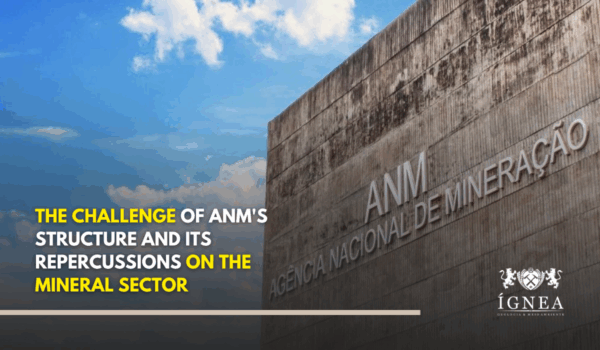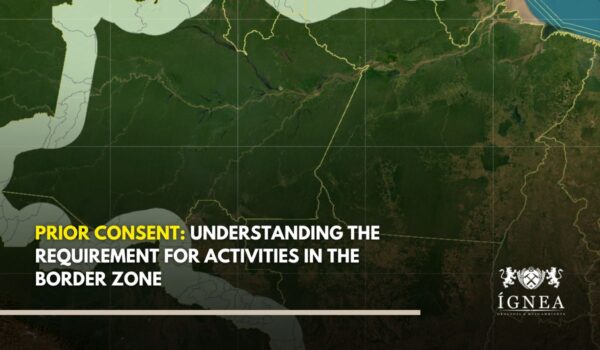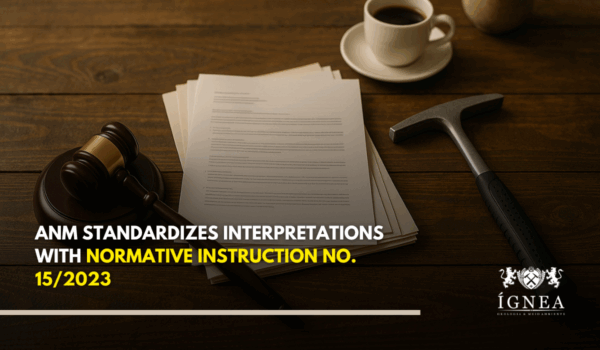Opinion/PROGE No. 500/2008-FMM-LBTL-MP-SDM-JA, issued by the Federal Attorney General’s Office attached to the former National Department of Mineral Production (DNPM), now the National Mining Agency (ANM), represents a milestone in the attempt to standardize procedures when facing conflicts between mineral exploration and the implementation of electricity generation and transmission projects. Its detailed analysis reveals the established criteria and procedural steps, highlighting the implications of the “Term of Renunciation.”
Context and Fundamental Principles
The opinion starts from the constitutional premise that mining and electricity services occupy the same legal standing, with no pre-defined hierarchy (Abstract, item 1; Basis, item 15). Given this, resolving conflicts due to overlapping areas or interests requires the careful application of Article 42 of the Mining Code. This article allows for the refusal of mining authorization (interpreted broadly to cover other phases and mining titles – item 23) if it is detrimental to the public good or compromises interests that outweigh the utility of mineral exploration, “at the Government’s discretion.”
The application of this article, according to the opinion, requires the verification of two cumulative and successive requirements (Abstract, item 2; Basis, item 19):
- Factual Incompatibility: The coexistence of mining and energy activities in the area must be technically unfeasible (Abstract, item 3; Basis, items 20-21). If both can coexist, even with adjustments, the public interest dictates maintaining both. Incompatibility must be proven in the case files (item 26).
- Preponderance of the Energy Interest: Once incompatibility is verified, it is analyzed whether the public interest linked to the energy project surpasses the utility of mineral exploitation in the area (Abstract, item 4; Basis, items 29-30). This analysis is discretionary (“at the Government’s discretion”), based on convenience and opportunity, considering multiple factors (item 30), and, in principle, defined by the Minister of Mines and Energy (Abstract, item 5; Basis, item 35).
The Area Blocking Procedure
The opinion details the steps for processing a request to block an area for energy purposes:
- Legitimacy and Request: The request can be made by the Ministry of Mines and Energy (MME), the National Electric Energy Agency (ANEEL), or the interested electricity concessionaire (items 38, 41-l). It must be formalized in writing to the ANM, supported by documents proving legitimacy, the intended area (including digitally), and the reasons for incompatibility and the preponderance of the energy interest (items 40, 41). Notably, the concessionaire is required to provide a “term of declaration and assumption of responsibility” for resulting indemnities (item 41-f).
- Provisional Blocking: Upon receiving the request, the ANM Director-General may order the immediate suspension of the analysis of mining processes (new or existing) interfering with the area, while the blocking request is analyzed (item 43). This precautionary and reversible measure (item 45) does not prevent the continuation of already authorized or granted mining activities, only suspends the procedural analysis (item 46).
- Technical and Legal Analysis at ANM: The technical area (DICAM) conducts georeferencing studies, identifies affected processes, implements the block in the systems, communicates with interested parties and ANEEL, and analyzes compliance with Art. 42 requirements (compatibility and utility) (item 47). The Federal Attorney’s Office attached to ANM issues a legal opinion (item 49).
- ANM Decision and Referral to MME:
- If activities are deemed compatible, the Director-General denies the blocking request (item 51).
- If they are incompatible, the second requirement is verified. If the energy interest does not outweigh the mineral utility, the request is denied (item 55).
- If they are incompatible and there are indications that the energy interest does outweigh the mineral utility, the case files are sent to the MME to define the predominant interest (items 53, 54). Referral may be unnecessary if priority has already been defined by another body (e.g., CNPE Resolution – item 58).
- Final Decision: If the MME confirms the preponderance of the energy interest and the concessionaire’s term of responsibility is in the files, the ANM Director-General grants the block (total or partial). This may lead to the denial of new mining applications or the initiation of proceedings to revoke existing titles in the area, ensuring due process (items 56, 57).
The Term of Renunciation: A Broad and Potentially Detrimental Tool
The opinion addresses the possibility of granting precarious and time-limited mining titles, even in areas subject to priority energy projects, upon the miner signing a “Term of Renunciation” (items 6, 59-63). The cited legal basis refers to a 1983 Normative Instruction (for flood-prone areas) and the agency’s founding law (item 61).
The stated objective is to allow the “rational and efficient” exploitation of existing mineral resources (item 62). However, analyzing the model proposed in Annex II reveals the extent of the concessions required from the miner:
- Acknowledgment of Energy Priority: The miner declares acknowledgment that the public interest of the energy project outweighs the utility of their mineral exploration (Annex II, item c).
- Acceptance of Revocability: Declares awareness that ANM may, at any time and at its sole discretion, revoke the mining title or deny its renewal, especially if incompatibility with the energy project is confirmed (Annex II, item d).
- Irrevocable Waiver of Appeal: The miner irrevocably waives the right to appeal administratively or judicially against the decision to revoke or not renew the title (Annex II, item e).
- Commitment to Immediate Demobilization: Commits to immediately cease activities and demobilize everything within 15 days, should revocation or non-renewal occur (Annex II, item f).
- Irrevocable Waiver of Indemnities: The miner irrevocably waives any and all claims or requests for indemnities, reparations, or compensations, of any nature, against the Union, ANM, or the energy concessionaire, due to the revocation/non-renewal of the title or the consequent stoppage of activity (Annex II, item g).
Implications of the Renunciation:
This term represents a substantial abdication of rights by the miner. They accept an extremely fragile title, subject to discretionary revocation and without the right to appeal or financial compensation for investments made or the loss of exploitation opportunity. Although the opinion mentions the right to indemnity in case of blocking (items 7, 64, 67), the Term of Renunciation specifically eliminates this possibility for those who accept the precarious title. The miner assumes all the risk in exchange for an uncertain and potentially short window of operation.
Conclusion
Opinion 500/2008 established a detailed procedure for managing conflicts between mining and energy, based on the analysis of incompatibility and preponderance of public interest. However, the introduction and validation of the “Term of Renunciation,” as proposed, created a mechanism that, while potentially enabling temporary mineral exploitation, imposes severe conditions on the miner, requiring a broad waiver of appeal and indemnity rights, demanding caution and deep analysis from mining rights holders faced with this possibility.
What is your assessment of the balance proposed by the opinion and the conditions of the Term of Renunciation? Leave your comment.














